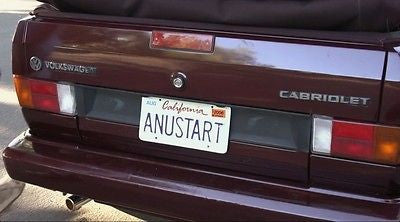There has been a lot of talk that this was the season that the harbrau HAD to get over the hump. For whatever reason, it totally escapes me, they were the preseason B1G favorites and many had them as a CFBP contender. Well, those goals are in the toilet. Looking over their roster, it's pretty easy to see why this season was THE year he had to accomplish something. Next year, as their 2017/2018 recruiting classes start making up the core of their roster, things start to look pretty bleak, particularly at the skill positions:
QB: Losses (Shea Patterson) / Returnees R-JR Dylan McCaffrey (#5 PRO/#123 Overall, 2017), JR Joe Milton (#9 PRO/#204 Overall, 2018), R-FR Cade McNamara (#7 PRO/#268 Overall, 2019) / Incoming JD Johnson (#16 PRO / #387 Overall)
McCaffrey is the clear favorite for the job. His athleticism may make him a better overall fit for a spread-based offense, but his sample size is very small, and he's looked shaky as a passer when he's played. Coming into this season, word was that he was going to see significant action. For whatever reason, that has not happened. Partially, probably, because he suffered a concussion in their Bucky ass-beating, but even before that game he wasn't seeing the field much. Milton has a big arm, but has chucked 2 ints in 11 attempts. McNamara has made no noise and incoming FR JD Johnson is a middling recruit.
RB: Losses (None) / Returnees SO Zach Charbonnet (#4 RB / #46 Overall, 2019), R-SR Tru Wilson (NR ATH / NR Overall, 2016), R-SO Hassan Haskins (#49 RB / #975 Overall, 2018), JR Christian Turner (#22 RB / #508 Overall, 2018), R-SO Ben VanSumeren (#50 ATH / #624 Overall, 2018) / Incoming Blake Corum (#14 RB, #143 Overall), Gaige Garcia (#134 RB, NR Overall)
Charbonnet has shown some flashes of talent, but has often been clogged up behind a very mediocre OL. Plus, injuries are a question...he missed the spring with a knee injury that again limited him in a couple of games early in the season. After him, nobody stands out; Haskins had a big game against Illinois, but has been meh outside of that. Turner is mediocre and can't block, Wilson looks like a mediocre backup. VanSumeren is a plodding FB-type. Corum could be a decent back when he arrives.
WR: Losses (Nate Schoenle, potentially DPJ, Nico Collins and Tarik Black, lets assume they all go...) / Returnees JR Ronnie Bell (#212 WR / NR Overall, 2018), SO Cornelius Johnson (#26 WR / #175 Overall, 2019), SO Mike Sainristil (#60 CB / #876 Overall, 2019), SO Giles Jackson (#41 WR / #303 Overall, 2019), R-FR George Johnson (#60 ATH / #876 Overall, 2019) / Incoming AJ Henning (#18 WR / #89 Overall), Roman Wilson (#58 WR / #342 Overall)
Depending on the NFL decisions of Collins/DPJ/Black, things could be very bleak here. If one of the three return, they could make a decent pairing with Ronnie Bell. If all three go, it's Bell and a bunch of question marks. AJ Henning is a nice recruit who should help, but the returnees are mostly "meh" recruits who haven't shown anything. Not ideal when you're breaking a new QB.
TE: Losses (None) / Returnees R-SR Sean McKeon (#45 TE / #854 Overall, 2016), R-SR Nick Eubanks (#15 TE / #244 Overall, 2016), R-SO Luke Schoonmaker (#39 TE / #796 Overall, 2018), SO Erick All (#13 TE / #346 Overall, 2019)
Conceivably, both Eubanks and McKeon could be back for their fifth year. Neither of them look like playmakers. Schoonmaker and All have both seen playing time this year, but have a combined 3 catches.
So, a depth chart, in theory looks like so, allowing that, say, Tarik Blacks returns, DPJ and Collins go pro:
QB- McCaffrey / Milton / McNamara / Johnson*
RB- Charbonnet / Haskins / Wilson / Turner / Corum*
WR1- Black / Henning*
WR2- G. Jackson / G. Johnson / R. Wilson*
SLOT- Bell / Sainristil
TE- McKeon / Eubanks / Schoonmaker / All
* = True Freshman
Yuck.







